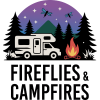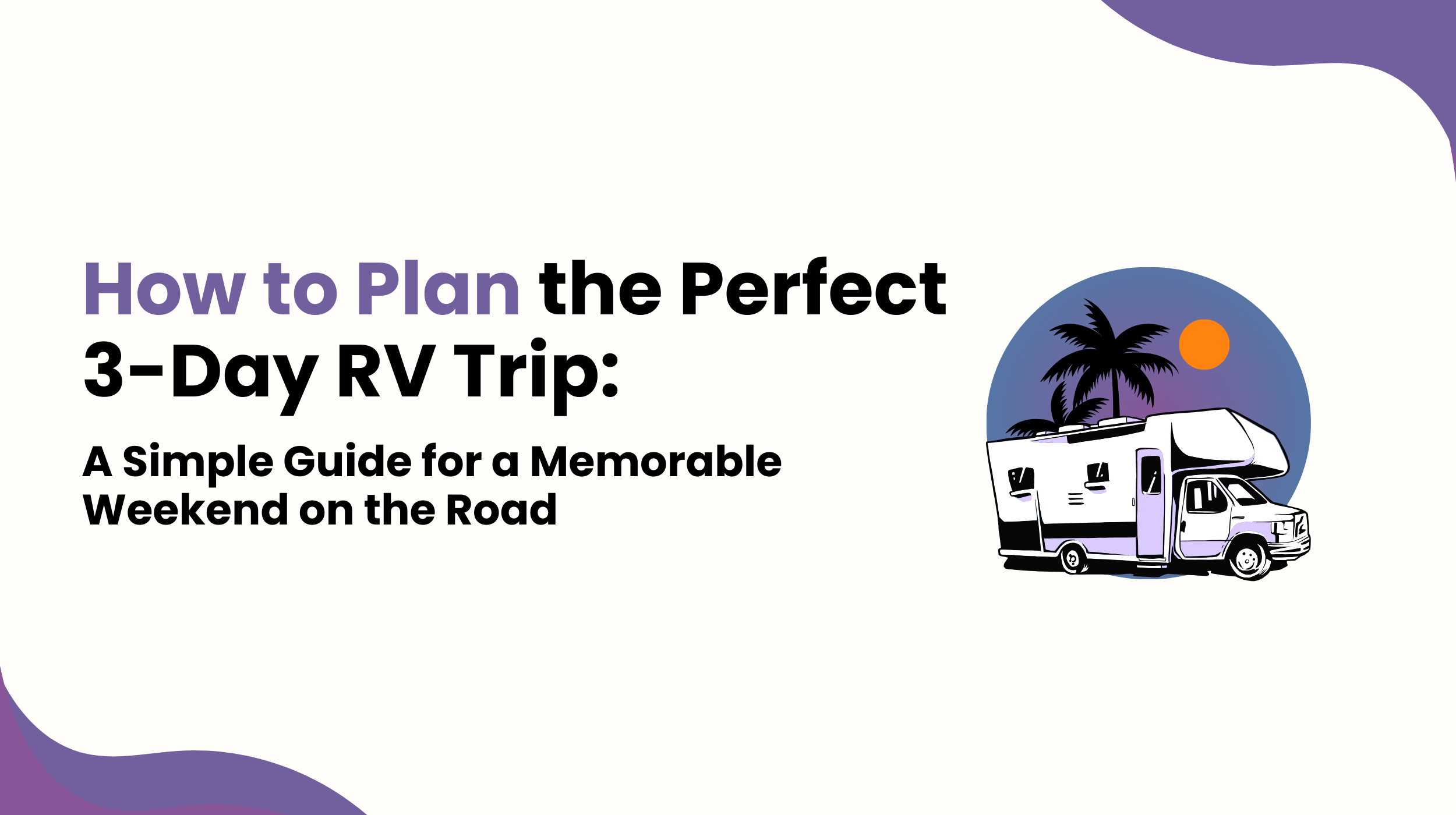Planning a long weekend or a quick 3-day RV adventure? It’s easier than you might think to create a fun, stress-free itinerary that mixes just the right amount of driving, exploring, and relaxing. Whether you’re escaping to a beach town, cruising through mountain roads, or pulling up next to a forest lake, the key is a little forethought and flexibility. In short: pick a great destination, map out a manageable route, reserve your camping spots early, and pack with purpose. This guide breaks down each step, helping you build an easy, enjoyable RV weekend trip that doesn’t feel rushed or chaotic.
Step 1: Choose Your Destination and Set Your Dates
Before anything else, think about what kind of trip you want. Do you crave coastal breezes, desert sun, or forest solitude? Choosing a destination within a reasonable driving radius is essential if you’ve only got three days. Many RVers plan getaways within 200–300 miles of home, which keeps drive time manageable and leaves more time for actual vacationing.
Let’s say you’re based near Denver, Great Sand Dunes National Park could be the perfect escape. Live in Nashville? Consider heading toward the Great Smoky Mountains or Land Between the Lakes. If you’re in the Pacific Northwest, Deception Pass State Park offers cliffs, beaches, and mountain views, all within a few hours of Seattle.
Once you’ve picked your destination, lock in your travel dates. Many weekend RVers leave on a Friday morning and return Sunday evening, while others extend the trip into Monday for a full three nights. Be sure of your start and end times; this helps when reserving campgrounds and deciding how far you can comfortably travel.
Step 2: Map Out Your Route for Scenic Fun, Not Stress
After deciding where you’re going, it’s time to map the journey itself. Aim for no more than 4–5 hours of drive time each day. This isn’t a race, it’s an adventure. The point is to enjoy the ride as much as the destination. For a 3-day trip, your best bet is a loop route where you don’t backtrack, or an out-and-back with planned stops.
Use Google Maps or an RV-friendly app like Roadtrippers or RV LIFE Trip Wizard to build your route. These tools allow you to add interesting detours, maybe a quirky roadside diner, a scenic overlook, or a local farm stand.
If you’re heading from Phoenix to Catalina State Park in Tucson, you could swing through Saguaro National Park for a photo op among towering cacti. Driving through Northern California to Bodega Bay? Add a stop at the Armstrong Redwoods for a walk among 300-foot giants. The road itself should be part of the fun, so plan stops where you can stretch your legs, snap photos, and snack under the open sky.
Step 3: Book Your Campgrounds or Overnight Spots Early
This part’s critical; don’t leave overnight stays to chance, especially during weekends or holidays. Depending on your itinerary, you may book two different RV campgrounds or spend two nights at one. Make sure your plan leaves time to arrive, set up, and relax.
State and national parks are popular for a reason. They offer natural beauty, quiet evenings, and affordable rates. Catalina State Park, for example, provides full hookups, shaded sites under mesquite trees, and access to incredible desert hikes. ReserveAmerica, Recreation.gov, and Hipcamp are great platforms for booking these sites.
If you prefer a resort-style campground, look at places like Sun Outdoors in San Diego Bay or KOA West Glacier in Montana. These offer full hookups, pools, fire pits, and often, RV-friendly amenities like pull-through sites and dump stations.
Whatever your preference, confirm check-in and checkout times to make sure they fit your schedule. Also, double-check that your site can accommodate your rig size and that hookups are available if you need them. If you’re dry camping, ensure your batteries and water tanks are ready for a few nights off-grid.
Step 4: Plan Activities – But Keep It Simple
It’s tempting to fill every hour of your itinerary with things to do, but less is often more for a short RV trip. Try focusing on one or two must-do activities per day and leaving the rest of the time open for relaxing, wandering, or even doing nothing at all.
Let’s say you’re camping at Hunting Island State Park in South Carolina. You could start the morning by climbing the historic lighthouse and walking along the beach at low tide. In the afternoon, maybe it’s time to break out the bikes and explore the maritime forest trails. Then it’s back to your site for dinner under the stars.
If you’re visiting a place like Devil’s Tower KOA in Wyoming, plan a hike around the base of the iconic monolith and then take in a local cowboy cookout in the evening. The goal isn’t to check everything off a list but to immerse yourself in the location.
That said, having a rough plan helps avoid decision fatigue. Think about meals too, do you want to cook at the site each night or head to a local diner for a pancake breakfast? Knowing your options in advance makes everything go smoother.
Step 5: Pack Smart and Prep Your Rig
Packing for a 3-day trip doesn’t have to be a logistical nightmare. Since you’re only out for a few nights, aim to travel light but smart. Bring versatile layers for weather shifts, basic cookware, simple meal ingredients, and a few comfort items like camping chairs, hammocks, or a Bluetooth speaker.
Use a checklist to ensure essentials aren’t left behind, especially things like leveling blocks, hoses, surge protectors, and sewer gear if you’re using full hookups.
Before you leave, give your RV a quick once-over. Check tire pressure, oil, fuel, propane levels, and your freshwater tank. If you’re renting, ask the provider to walk you through the key systems: how to hook up electricity, where the fuses are, how to manage waste tanks, and what to do if something isn’t working.
Want to take things up a notch? Bring firewood, s’mores supplies, and a printed copy of your itinerary or reservation confirmations in case you don’t have cell service.
How Far Should You Drive on a 3-Day Trip?
This is one of the most common questions, and an important one. For a 3-day weekend, the sweet spot is generally 200 to 300 miles total, or around 4 to 6 hours of driving each way. That might seem like a lot for some, but splitting it over multiple days becomes very manageable.
Let’s say you’re heading from Austin to Garner State Park in Texas, about 170 miles. That’s a three-hour drive, which leaves plenty of time to swim in the Frio River, hike Old Baldy, and cook dinner back at the campground before sunset.
Avoid routes requiring 8+ hours of driving in a single day. Not only is that exhausting, but it defeats the purpose of a relaxing weekend. You’ll spend more time recovering than enjoying. If your ideal destination is too far, consider saving it for a longer trip and picking something closer for your weekend escape.
Remember, a short trip doesn’t mean you have to compromise. With smart planning, even a few days on the road can feel like a true getaway.
Simple Plans Make for Big Adventures
A well-planned 3-day RV trip is about balance: between driving and exploring, between activities and downtime, and between planning and spontaneity. You can turn a simple long weekend into a memorable mini-vacation by choosing a reachable destination, mapping a relaxed route, reserving the right campsites, planning a few meaningful activities, and packing with intention.
So pull up a map, check your calendar, and pick your next spot. Whether it’s a quiet forest retreat, a beachside campsite, or a national park you’ve never visited, your next adventure is just three days away.

